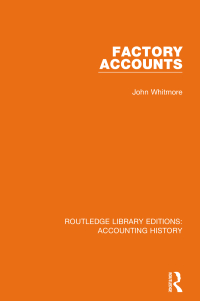Question
Bart, Lisa, and Maggie formed the Kwik-E-Mart LLC at the beginning of 2020. Bart and Lisa each contributed $200,000 and Maggie transferred several acres of
Bart, Lisa, and Maggie formed the Kwik-E-Mart LLC at the beginning of 2020. Bart and Lisa each contributed $200,000 and Maggie transferred several acres of agricultural land she had purchased two years earlier to Kwik-E-Mart LLC. The land had a tax basis of $50,000 and was appraised at $300,000.
The land was also encumbered with a $100,000 mortgage loan. Bart has guaranteed the $100,000 mortgage loan. The guarantee means that Bart is personally liable for the $100,000 mortgage if something goes wrong and the Kwik-E-Mart is not able to pay the mortgage loan back. Bart is concerned about guaranteeing the Kwik-E-Mart mortgage loan.
As such, Bart has approached you, as his tax advisor, to advise as to whether Bart can guarantee the loan using a tax planning mechanism known as a bottom dollar guarantee. A bottom dollar guarantee means that the Bank that made the mortgage loan to Kwik-E-Mart can only go after Bart after the last dollar of Kwik-E-Mart has been used to repay the loan. If Bart can use a bottom dollar guarantee, then the $100,000 mortgage loan would be recourse to Bart, and Bart would be able to increase his basis in his partnership interest in Kwik-E-Mart. If the loan is nonrecourse to Bart, then Bart cannot increase his partnership interest.
The members plan to use the land and cash to begin a cattle-feeding operation. Maggie will work fulltime operating the business, but Bart and Lisa will devote less than two days per year to the operation. All three members agree to split profits and losses equally. At the end of the first year the Kwik-E-Mart had accumulated $40,000 of accounts payable jointly guaranteed by Bart and Lisa and had made a $9,000 principal payment on the mortgage. None of the members have passive income from other sources or business income from other sources. Bart and Lisa are married, while Maggie is single.
For the first year of operations, the partnership records disclosed the following information:
Sales revenue $620,000 Cost of goods sold $380,000 Operating expenses $670,000 Dividends $1,200 Municipal bond interest $300 Salary paid as a guaranteed payment to Susan (not included in expenses) $10,000 Cash distributions split equally among the members at year-end $3,000
Research Barts idea of using a bottom dollar guarantee which would allow Bart to provide a guarantee of the $100,000 Kwik-E-Mart mortgage loan.
Prepare a 1-2-page memo (DO NOT EXCEED 2 PAGES) summarizing what a bottom dollar guarantee is, and whether you recommend that Bart use this as a tax planning strategy
Your 1-page tax memo should include: i. Background which summaries the facts of what Bart is trying to do and what a bottom dollar guarantee is, ii. Issue what is the issue with using a bottom dollar guarantee, iii. Analysis what does the applicable tax code, case law, and authorities have to say on a bottom dollar guarantee, iv. Recommendation what do you recommend to Bart? If you recommend that Bart use a bottom dollar guarantee, then prepare the rest of the assignment as if the $100,000 Kwik-E-Mart mortgage loan was recourse to Bart. If you do not recommend that Bart use a bottom dollar guarantee, the prepare the rest of the assignment is if the $100,000 mortgage loan were nonrecourse to any of the partners. If you feel necessary, please provide any comments on a tax reserve or tax disclosure under FIN 48.
Compute the adjusted basis of each members interest immediately after the formation of the LLC. When does each members holding period for his or her LLC interests begin?
What is Kwik-E-Marts tax basis and holding period in its land?
What is Kwik-E-Marts required tax year-end?
What overall methods of accounting were initially available to Kwik-E-Mart?
List the separate items of partnership income, gains, losses, deductions and other items that will be included in each members Schedule K-1 for the first year of operations. Use the proposed self-employment tax regulations to determine each members self-employment income or loss.
What are the members adjusted bases in their Kwik-E-Mart interests at the end of the first year of operations?
What are the members at-risk amounts in their Kwik-E-Mart interests at the end of the first year of operations?
How much loss from Kwik-E-Mart, if any, will the members be able to deduct on their individual returns from the first year of operations?
Step by Step Solution
There are 3 Steps involved in it
Step: 1

Get Instant Access to Expert-Tailored Solutions
See step-by-step solutions with expert insights and AI powered tools for academic success
Step: 2

Step: 3

Ace Your Homework with AI
Get the answers you need in no time with our AI-driven, step-by-step assistance
Get Started


